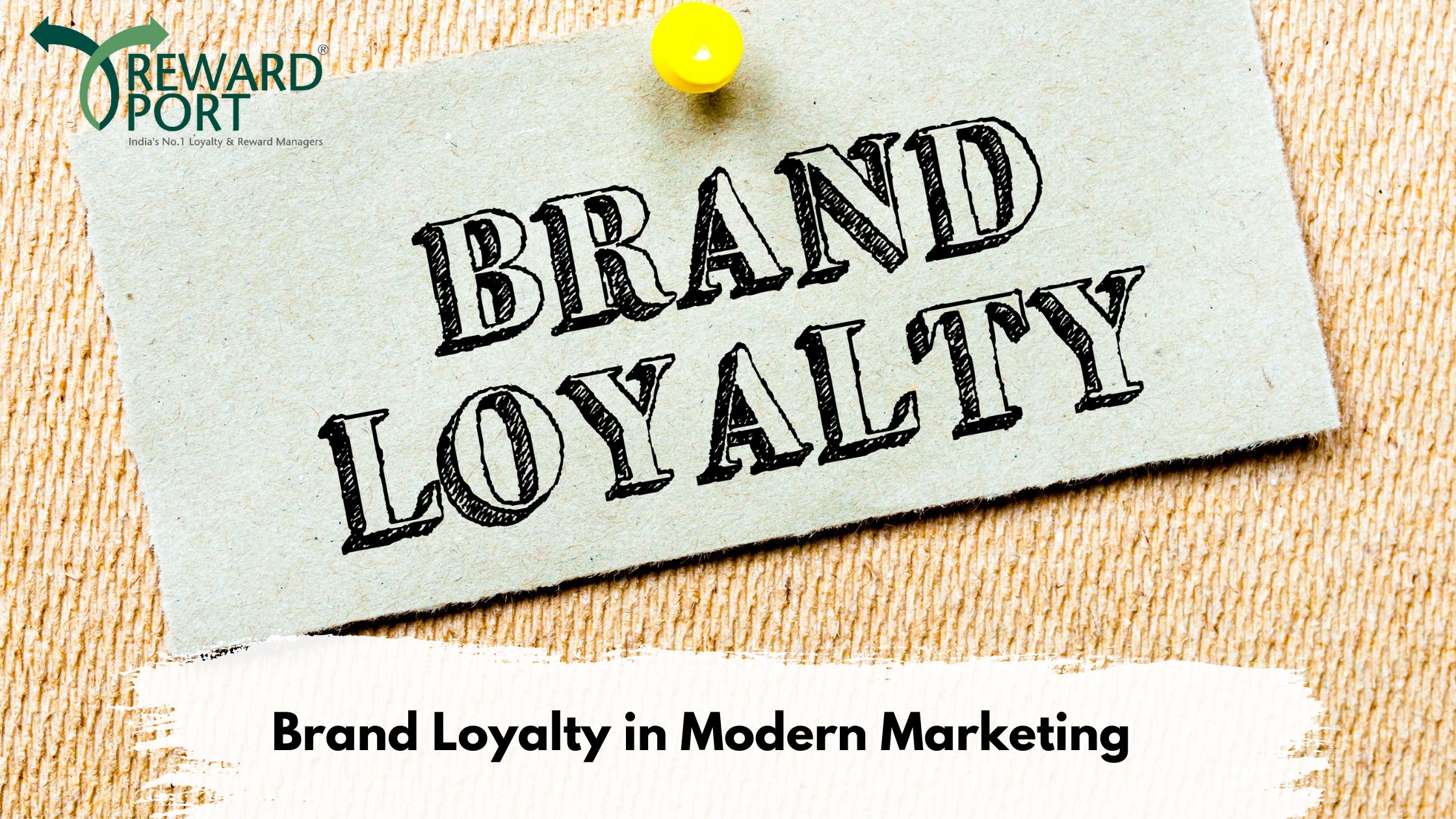
Brand Loyalty in Modern Marketing: Ways to Improve It and Retain Customers
As an entrepreneur or marketer, you are probably intrigued by some brands that have a cult-like following. Their customers remain loyal to them for nearly a lifetime and make repeat purchases whenever they require that specific product or service, regardless of price. Such brands can be found in every industry and come in a variety of sizes and shapes.
Value of Brand Loyalty
Brand loyalty has proven to be extremely important in creating iconic brands and retaining customers for an extended period, even a lifetime.
The following points emphasize the significance of brand loyalty for any type of business:
• Lower acquisition costs
You must be aware that the cost of acquiring a new customer is five to seven times that of retaining an existing one. This is where brand loyalty comes in handy. An effective brand loyalty program can lower the cost of acquiring new customers by keeping existing customers loyal and enticing them to make repeat purchases.
• Retargeting and remarketing made simple
According to one recent study, businesses are only 5 to 20% likely to sell their products or services to a new prospect while they are 60 to 70% likely to sell to an existing customer.
• Increased customer trust
Customers have exceptional trust in successful brand loyalty programs because they focus on delighting and exceeding their expectations every time. This gives them a significant competitive advantage and allows them to charge a higher price for their products and services than their competitors. Despite charging a premium, they retain most of their customers and receive consistent repeat purchases.
Top Ways to Increase Brand Loyalty
Before making a purchase, modern customers scour websites and research the products they intend to purchase.
You can’t rely on traditional methods to generate loyalty when customers are 60% to 80% of the way down the funnel before speaking with anyone at your company.
At the same time, fewer customers remain loyal to a single brand.
Loyal customers are profitable customers because they are less expensive to market as they purchase more frequently. However, only 27% of initial sales become repeat customers. Companies must invest in cultivating customer loyalty.
• Begin with your employees
If you want satisfied customers, start with your employees. Customers notice and feel it when they are appreciated, valued, and included. Call your boss and co-workers. Inquire how they are doing and what you can do to assist them. Be adaptable. Be adaptable. Make communications more personal. Employees will then pass it on even if their boss is not looking! Loyalty spreads like wildfire.
• Maintain Contact Between Projects
Maintain contact with current and former customers in between projects. Customers can stay informed about your service offerings by receiving a client-focused newsletter regularly. When comparing the cost per new lead versus the cost of retention, a client discount is also a great incentive and a justified expense.
• Connectivity and functionality should be combined
The combination of brand functionality and emotional connectivity is redefining brand loyalty. Products and services must not only solve a problem but also reflect the views and preferences of the customer. Marketers who strike this balance will build stronger, more intimate relationships with brand ambassadors.
• Engage your customers
Connecting with your users aids in the development of a sense of belonging and community. To get your users excited and engaged, share your brand’s new and exciting developments, as well as news and opinions in your industry.
You can use social media to inform customers about new trends, special deals and discounts, and your company’s next steps. The more like a conversation it feels, the better.
Another way to keep your existing customers happy is to recognize their needs before they even realize they have them. Predict what your customers are likely to want using your customer behavior data, and then provide it to them.
A simple Thank You note, Happy Birthday or Happy Holidays greeting will also go a long way. Customers in any industry want to know that you care about them outside of business transactions.
• Personalize programs
When it comes to brand loyalty programs, there are numerous reward and incentive options available to keep your customers engaged and loyal. Most successful brands use a variety of options, including points programs, hybrid loyalty programs, tiered programs, fee-based loyalty programs, and others. Using a variety of loyalty programs can be extremely appealing and valuable to various customers.
• Create a distinct brand position
Nothing beats your company’s distinct brand position when it comes to increasing brand loyalty. Unique brand statements are created by strong brands to highlight their brand values, unique selling propositions (USPs), and market position.
A distinct brand position communicates what distinguishes your company and the value it adds to the lives of your customers. Create a distinct brand position that resonates with your target customers. Determine what distinguishes you from your competitors and list the strongest points of your brand that distinguishes it from the competition.
• Channel sales partners should be rewarded
The comprehensive and multi-pronged nature of the brand loyalty program is its best feature. Working with the right channel sales partners and providing them with appropriate rewards and incentives is one of the most effective ways to boost your brand equity.
A brand can benefit greatly from collaborating with the right channel partners and creating personalized and tailored rewards for them. It will encourage channel partners to prioritize one brand over others, thereby improving brand identity and equity.
Appropriately rewarding channel partners create a virtuous cycle that tends to pass the benefits on to the end customers.
• Increase loyalty by using reciprocity
Reciprocity is a social construct proven to increase loyalty. Kindness creates a sense of obligation in the recipient, who instinctively wants to repay the kindness.
There are two types of reciprocity, and both can be used to increase customer loyalty to customer service.
A surprise gift or gesture is surprise reciprocity. For example, if you send your customer free swag or tickets to a company event without warning.
Trumpeted reciprocity occurs when someone gives or does something beneficial in a way that demonstrates that they are going above and beyond. It doesn’t mean you have to document and report on everything you do, but it should be clear to the customer that what you’re doing is outside the normal scope of the working relationship. Giving your customer early access to a new product or feature is an example of this.
Conclusion
Loyalty marketing is critical for building long-term relationships with customers who spend more money with you. With loyalty scheme members generating 12 to 18% more revenue per year than the average guest shopper, it’s no surprise that loyalty marketing is so popular among brands.
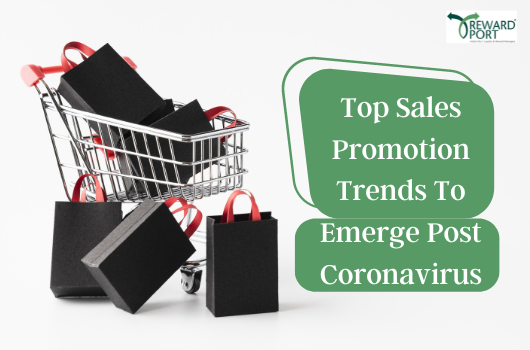
Top Sales Promotion Trends To Emerge Post Coronavirus
Any form of promotion during Covid is quite a sensitive matter. There is a very fine line between notifying your customers and annoying them. If you are planning to get in touch with your customers, then you must know that by the time your communication reaches them they must be already annoyed to the core with hundreds of emails lying unopened in their mailboxes with subjects on Covid.
So before you initiate the promotions, you might want to check out the sales promotions trends that would emerge during this pandemic.
The language of all the promotional communication ought to be sensitive and empathic. If the customers find you lacking compassion they won’t bother to engage, let alone buy your brand. Maintaining that human touch during campaigns has become more important now than ever. When informing your customers about your processes and policies during Covid, brands need to show that they are being responsible.
Creativity and joyful communication is going to play a big role during Sales Promotion campaigns.
With customers getting bored, locked in their houses, brands can make use of this opportunity by spreading some joy among their customers with the help of creative and engaging campaigns. This will not just help in better and easier conversions but also give a good brand recall value.
With most of the media houses and studios shut, use of social media influencers would be a great idea at this point in time. According to a survey conducted by Hammer Kopf Consumer Surveys, amid the lockdown, in India, there has been 87% increase in social media usage. Brands should utilize this trend and hire relevant and authentic influencers for the sales promotion campaigns.
Offer Discounts and Promotions.
BOGO (Buy one Get one) is here to stay. The purchasing power of the consumers has been immensely affected. Also it has been observed that the consumers who can afford to buy are delaying purchases. A slashed price would motivate the consumers to make the purchase without further procrastination. Along with price cuts, there can be all forms of BOGO offers.
Free samples of products or online trials of services is a great way to launch a new brand during Covid. When giving out samples, make sure that the consumers know about the safety policies that your brand is following like contactless deliveries, best practices of hygiene and so on.
Apply Targeted Promotions.
Something that your consumer needed earlier may not be required now. It is important to understand their needs and accordingly craft the promotion strategies. According to a Harvard Business study, regardless of which group consumers belong to, they prioritize consumption by sorting products and services into four categories:
- Essentials: are necessary for survival or perceived as central to well-being.
- Treats: are indulgences whose immediate purchase is considered justifiable.
- Postponables: are needed or desired items whose purchase can be reasonably put off.
- Expendables: are perceived as unnecessary or unjustifiable.
It is important for brands to classify their products or service and bundle it appropriately to have a successful campaign with a desired outcome. For example: Bundling an essential item with a treat can become quite a desired combination for a customer.
Giving out ‘At-Home reward’ coupons or gift vouchers is another unique way of sales promotion during this pandemic. Now that everybody is at home, brands should switch to rewards that can be redeemed at home, online. For example, they can give away reward coupons for online streaming channels, food delivery apps, online learning platforms, fitness apps, e-commerce websites and so on.
RewardPort specializes in loyalty marketing programs, corporate loyalty card, dealer incentive programs, dealer loyalty, channel incentive, distributor incentive program, B2B loyalty programs, customer loyalty cards & marketing partner programs. Get a free consultation today.
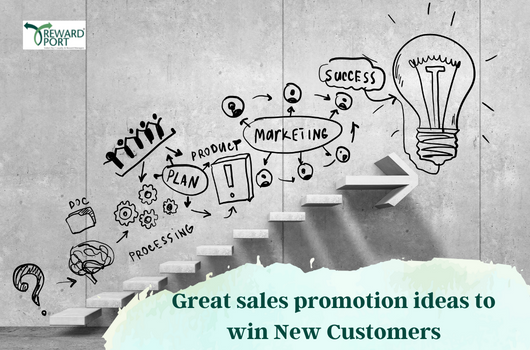
Great sales promotion ideas to win New Customers
Nurturing relationships with the customers is a significant aspect to shape a brand. Sales promotion strategies can do wonders for your brand through retention and engagement. Sales promotion is the process of persuading a potential customer to engage with the brand and eventually buy the product or service. A good sale promotion strategy can be effective at achieving a quick boost in sales but this “boost in sales” is mostly short-term. Many customers come back expecting or anticipating further promotions which is why brands have to continue coming up with different strategies to comply with the market behavior.
Here are some sales promotion ideas to make your campaigns successful:
Give away rewards
A compelling way to engage with consumers and motivate them to keep coming back to you is by giving them rewards. Offering the customers free credits or coupons on their next purchase is the perfect way to make them come back. It helps in increasing sales and also in improving the bottom line of your brand. So having a reward program in your sales promotion strategy is significant.
Personalize your brand
If your company is a massive faceless corporation, there’s a high chance that the customers would shy away from your brand. Giving a friendly face to your brand can help people connect to your product or service. It’s important for businesses to introduce themselves and share their story with the people. This is a simple yet effective technique to stand out and engage with the audience. Give your brand a voice, tell your story, add a character to your business if you can.
Create an urgency
Driving a ‘flash sale’ promotion is a great way to create urgency among the people and make them buy a product or a service, sooner rather than later. You can start with a teaser of the promotion and let people know about the upcoming sales. And when the timing is right, release your flash sales promotion.
Upgrade instead of price cuts
Upgrading your product is a better way to keeping your sales up rather than cutting down the prices. Giving some extra service or a product on the same price can appeal to potential consumers in a better way.
Momentum, scarcity, and credibility
Creating a momentum or anxiety before the sale, then making sure that in the middle of the sale the promotion becomes scarce, and ending the sale promotion at the promised time. These three things are very significant. Ending the promotion at the given time gives something for people to regret.
Free trials
Free trials are popular at attracting attention. Let’s take an example of Netflix and other streaming services who give out 1-month free trial before the customer has to pay. This one-month free trial creates addiction in the free trial period and when that addiction is taken away, the consumer is forced to pay for the service.
Videos
Using videos to make product demonstration is a very effective way to attract consumers. Offering special discounts and other offers in your video will also get your customers excited to make a purchase
Use social media
Using social media to give out coupons and discounts which are only applicable through social media is another way of engaging customers.
Volume discounts
Offering volume discounts is a great way of encouraging individuals and businesses to purchase goods in multiple units or in large quantities. Shoppers love volume discounts, so we often find business owners offering them to encourage sales.
Follow leads
Track your customers from the first contact to sale within the sales pipeline. Send and track emails, and alerts to help follow up with potential clients.
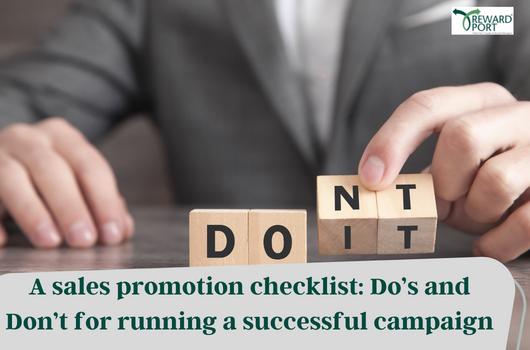
A sales promotion checklist: Do’s and don’t for running a successful campaign.
If you are looking to amplify the product sales for your brand, it calls for a structured sales promotion campaign. Many businesses in the market are always looking forward to attracting their old and new customers in different ways to promote their products. At the same time increase profits for their business. From a customer’s point of view, it is about finding, analysing something new in the market and the benefits it brings them in the long run. Their ultimate aim is to feel satisfied with their purchase. There should be a value owned for their money. A brand can gain a lot when it is able to pull off a successful sales campaign. But there are many hiccups in the process and that’s when it fails.
First, let’s find out the Dos of running a successful sales promotion campaign. And then move on to the Don’ts which will be the crucial steps for implementing the campaign.
Do’s:
- Set an objective for your sales promotion campaign. It could be a short or long term objective. You should be able to state, measure and analyze the goals set
- It is important to know your target market. Ask this question to yourself. Will the sales promotion appeal to the target group? Each group comes up with its unique behavioural action. Their needs and tastes are different from one another. Find out the right type of sales promotional campaign that suits your target audience
- Work on the type of messaging, voice, offer content appeal, format and duration. Brainstorm with your team to extract a lot of ideas. You can execute it better if you have a solid plan in place
- Examine and evaluate your promotional budget. The process involves knowing the cost breakdown, expenditures and balances. Allocate the funds to determine the profit margin
While designing a sales promotional campaign for your brand, including a sense of scarcity as and when you know the time is right. This situation of urgency can increase the demand and value for your products.
The Dont’s:
- Understand your customers. A lot of factors influence a buyer’s purchasing decision. There are many reasons behind their approval and disapproval of your product when they purchase. Do not include actions that will affect your plan in the future
- There is an overload of information in the digital age. Your customers read many online reviews which may impact the sales. Do not assume that the influential message on the sales campaign will run on a smooth road. Keep a sharp eye on customer feedback and the message that is being circulated on social media
- Make sure that your campaign is not hard to follow. Include a simple set of an action plan with workable backup programs
- Avoid stress and confusion. Find the loopholes from the current campaign and work on the solutions
Finally, evaluate the performance of your campaign – understand and summarize the key learnings. Find out whether your campaign met its objectives. Learn from the summary and use the information to design new campaigns in the future.
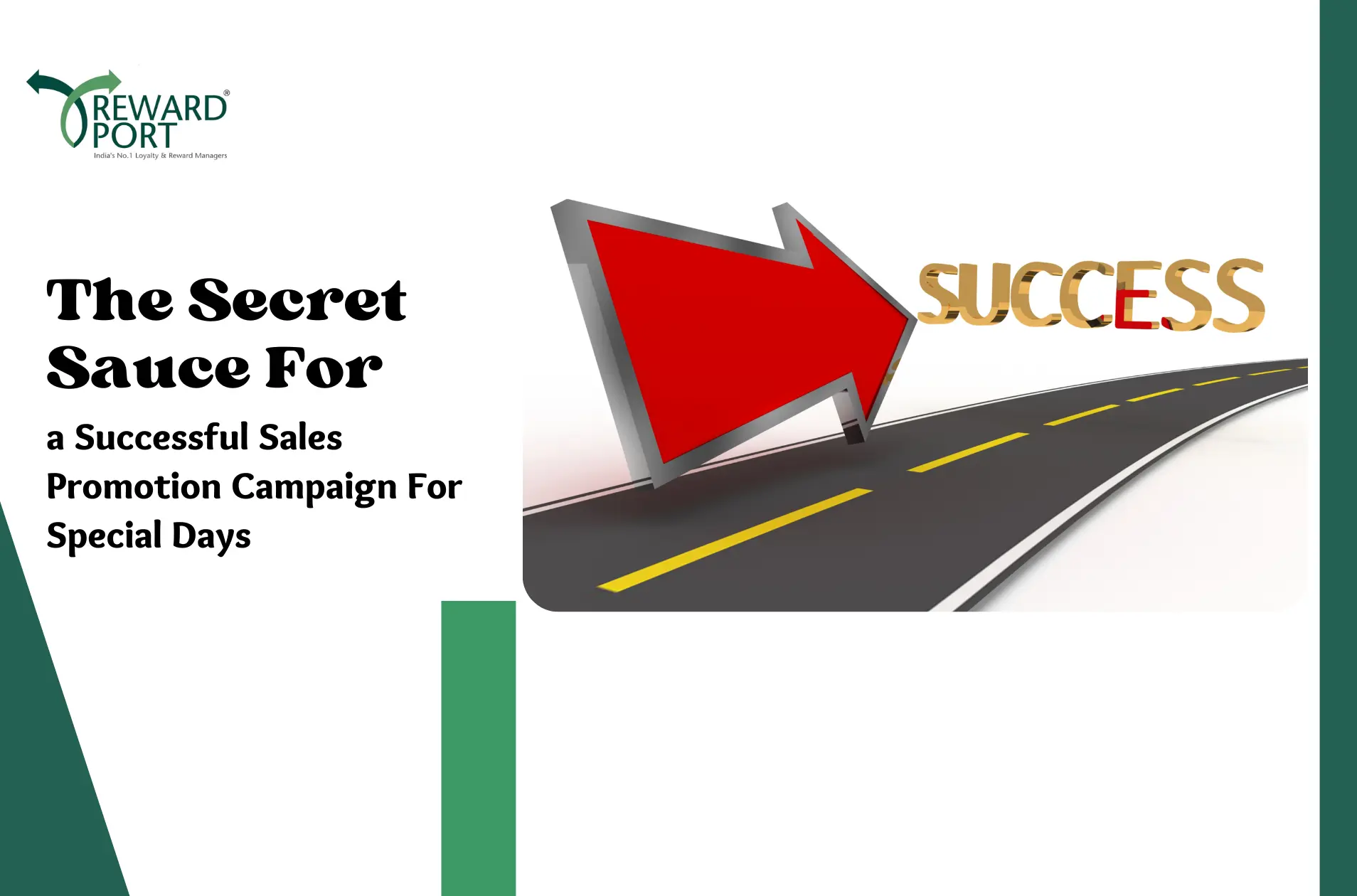
The Secret Sauce For a Successful Sales Promotion Campaign For Special Days

Be it the New year, Valentine’s Day, Republic Day or any celebratory day and most marketing teams would hound on the opportunity as soon as possible! The hounding does not stop there, in case you were wondering; it is further extended through several tactical strategies deployed by loyalty program companies in order to increase their sales. Companies often bank on these special occasions such as so and so days, international observatory days, etc to pump up their sales and build a connection with the clients. It’s also a great time when loyalty companies generate higher sales and convert potential buyers into loyal customers.
Just like you can’t repeat a dress to every fancy event, every occasion must have different sales promotions planned accordingly. “One size fits all” does not quite settle in, in such cases!
We’re sharing insight on the secret sauce for a successful sales promotion campaign for special days.
1. Keep it personal
The more you personalize your loyalty program, the easier it is to get a customer’s attention. The attention of your customer must not sustain only for a short span and to increase the same, your loyalty programs must deploy rewards and incentives that are specific to the special day it’s being launched on. The use of artificial intelligence can help with predicting your target audience’s preferences and choices.
2. To the point
Introducing a point system is a perfect strategy to utilize during festivals or special days. Encouraging your customers to buy during a specific celebratory day would fetch them a specific number of points. Each point represents a certain percentage of discount. These points are then rewarded to the customer in order to motivate them to shop again from your brand during the span of the special day’s offer. An accumulation of these reward points helps them purchase more by paying lesser. This point-wise reward system works great during Valentine’s day, Mother’s day, etc.
3. Exclusivity
A great way to ensure that you have a successful loyalty program that guarantees you with immediate sales hike and long-term customers is to please the existing ones. Offering your existing customers helps in getting traction and an increase in your sales. This also adds to the word-of-mouth marketing. When you market your loyalty programs exclusively to the members, it ties in a sense of exclusivity and allows them to feel special. Knowing that some offers are exclusive to member creates a positive feeling amongst them.
4. Time is ticking
Making your customers believe that the time is ticking encourages them to act on an urgency. Validating your offers to a specific time plays an important role in making them feel the need to utilize the opportunity before the time runs out. It automatically aids in the sales growing manifold.
5. Charming non-members
One fantastic way to rope in customers during special occasions is by projecting the benefits that members receive when they enroll in specific loyalty programs. Enticing offers showcased for non-members drives more attention home. Inquisitive buyers will enquire and subsequently enroll in the program if the incentives match their requirements.
Loyalty programs must evolve and customize itself in order to stay in tandem with what the customer wants. The simplest way of boosting your loyalty program is by utilizing the frenzy that naturally occurs during any celebratory day and package it in a way that lures target audiences with ease. Value-added loyalty programs are one such way to capture buyers who return for more.
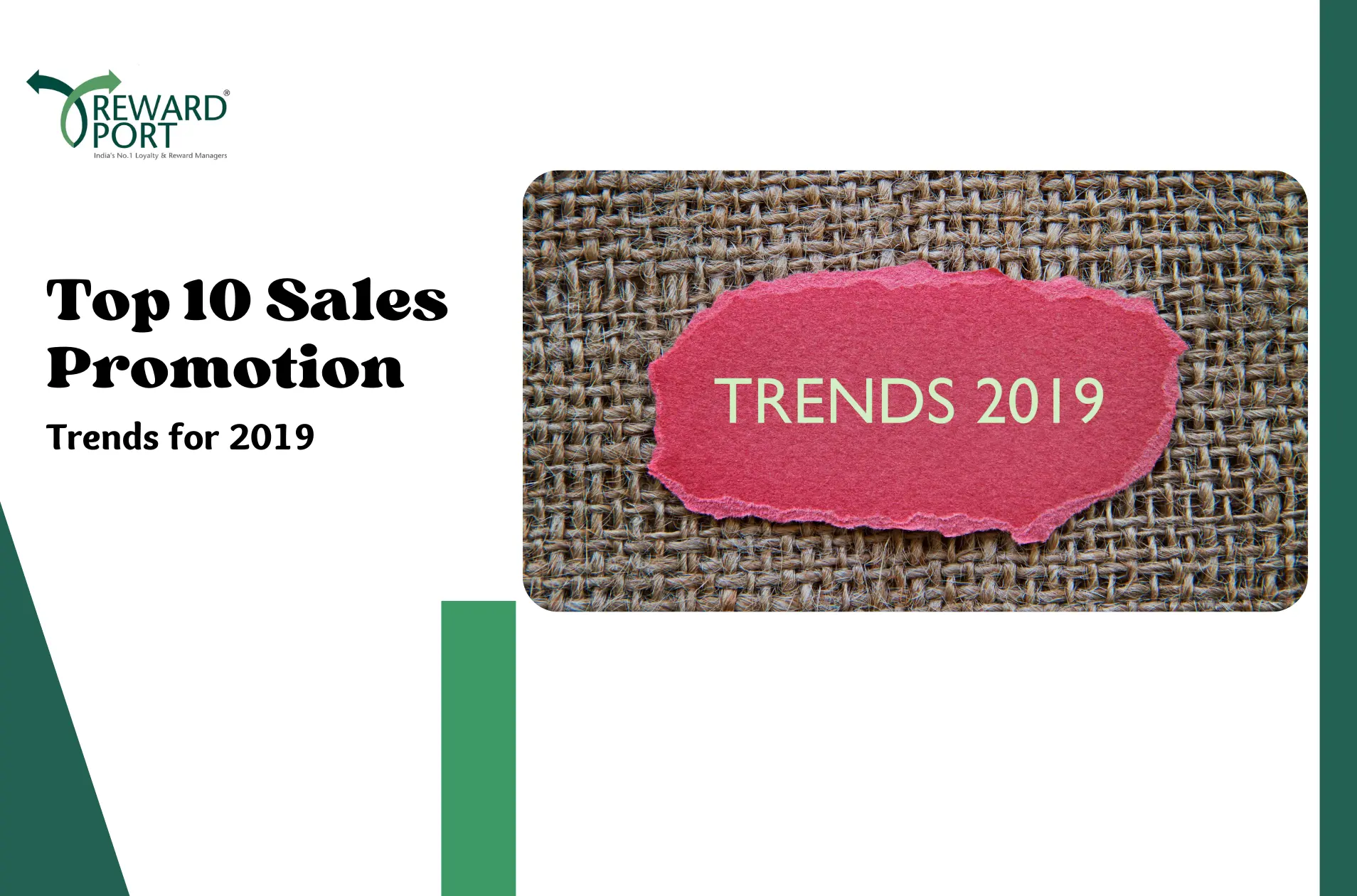
Top 10 Sales Promotion Trends for 2019

A company’s success or popularity is measured by several means but the way it performs in sales is one of the most important ways of gauging its success. Every brand’s value or rate of success is often dependent on its sales promotions and how they project themselves to their audiences and hence, it is an integral part of creating a successful brand. Sales promotions are the process through which a company or brand pitches their products or services to their target audience. This often consists of different promotional methods such as online marketing, direct sales, public relations, advertising, and several others. The use of media and non-media communications directed towards the audience for a pre-determined time frame helps generate customer demand and inquisitiveness amongst the people leading to an increase in their overall sales.
Sales trends are often fast-changing as the target audience and their taste keeps evolving with time. The strategies that worked wonders for a company at one point might stand null after a point and is highly dependent on the way or mode you choose to deploy for your product’s sales promotion. Some trends, however, have withstood the test of time and are a sure-shot sales promotion trend and the trends enlisted are ones that are likely to stay and emerge in the year 2019:
Buy One Get One Free
You may have heard plenty about this trend but the truth is that it is here to stay! Nothing sells better than another product of the same kind for free! It’s an easy but sure-shot way to engage and bring customers to buy your product. ‘Free’ is often an eye-wash but a powerful one as the strategy is to hike the price of the product and project it in a way that allows customers to believe that they are at a profitable position!
E-retailing
Gone are the days where you receive pamphlets of different brands selling customers their products at great offers as most of the buyers are now buying things virtually. So, it is imperative that you shift your sales tactics to the virtual sector as well. This gives brands a greater reach as the targeting can be narrowed further down which implies that sales are likely to increase automatically.
Social media influencers
The world is on the web now and so should you! Utilizing someone’s popularity to strengthen and sell your goods and services is likely to help both parties grow. Through promotions of your product on platforms such as Instagram and Facebook, influencers are likely to generate a healthy, organic growth for both, your brand and theirs. A collaboration between the two parties helps enhance the overall traffic on the influencer’s account and the brand they are collaborating with.
Testers and Samples
Apart from allowing your customers try and sample your products and services for free, having your brand advertise and promote in cultural events, fests, and exhibitions, giving out free samples or freebies aid in enhancing your customer’s loyalty towards your brand. It gives them an assurance of the genuineness and authenticity of the products or services that you may be offering. This automatically builds a stronger base for your brand to remarket to these customers.
Sales promotion trends that have ruled the market and are likely to build more rage in the year 2019 are listed above. Many more trends are sure to emerge in the year to follow as the way customers perceive brands are ever-changing and are constantly evolving and to keep up with the fast-paced audience, the way a brand sells themselves will need to constantly upgrade.
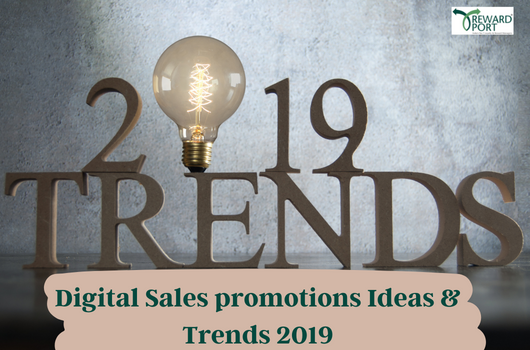
Digital Sales promotions Ideas & trends 2019
The most crucial way of reaching out to the target audience for any brand or company is through advertising and promotions. Every company relies on promotional techniques of various kinds for the success of their services or products and marketing via digital media has become the most effective and efficient means of promotion for brands at this point of time. As buyers are frequently distrusting of advertising and marketing strategies, it has become all the more critical for brands to penetrate into their target audience.
The audience to which advertisements and commercials are directed to have become more aware of matters and inquisitive as well, which has further pushed the companies and brands to constantly keep creating and innovating in order to stay at pace with the fast-growing consumers whose taste change at a rapid pace.
We’ve curated a list of trends and ideas that are employed for digital sales promotion by different companies. These are trends and ideas that are likely to appear or have already helped brands in promoting their products and services:
1. Authentic and Real Content
It has become imperative to go in the path that supports and projects only authentic and real content. Consumers are no longer hooked onto things that appear pre-concocted, lack reality or are “clickbait” content. The more raw and real you keep your advertising or promotions, the easier it is likely to get through to your target audience. Influencer marketing is one of the trendiest ways to gather people’s attention towards a certain product or brand. The element of “human trust” adds to the brand value and a real testimony helps them connect to the brand better than a highly edited video made for the purpose of selling. The idea is to sell an emotion through pointing out to subsequent aspects of the product one wants to sell. This indirect approach seems to be working for several brands already and is set to be one of the biggest trends of 2019!
2. Interactive Ads
Ads that do not sell products, sell the most number of products! The logic is strange but in reality, the lesser descriptive your promotion is, the higher the attention your audience would pay. Ads in the forms of interactive videos where the protagonist of the ad talks directly to you cause customers to believe that they are being made to be a part of the scenario. Ads that require customer responses or are in the form of a poll helps increase the interest and engagement of the audience resulting in a better sales scenario.
3. Voice Search is the thing!
With automated voice search devices such as Alexa and Google Assistant, people have become all the more dependent on these applications and gadgets to help them do tasks. The ability to make a device such as a phone or a tablet recognize and respond to your voice and help you with your browsing is incredible and can help marketers reach out to their audience by sectioning or categorizing them into specific keywords so that their ads appear on the top when a person voice searches for a product or service.
4. World of Social Media
A person’s presence is felt when they are doing things in different places and their information travels in the form of word-of-mouth and that’s exactly how brands aim to reach out to more and more audiences. They are keen on penetrating into the different outlets of social media based on their type of goods or services and after analyzing what is best for their brand image. Social media can help you brand become visible and highly approachable as it allows you to spread out and cater to different audiences based on which platform you use. Live streaming, contests, quizzes, giveaways, they’re all strategies to amplify your sales through digital media. For you, the choices are endless as you can promote your products and create brand loyalty on Instagram, Facebook, Twitter, Pinterest, Tumblr, LinkedIn and several other platforms!
5. Visual Search
We all know that artificial intelligence and machine-learning is speeding up most technological processes with each day and brands and companies just have to hop onto that wagon to stay at pace with the fast evolving consumers! Visual search is helpful and is likely to boom in the coming years as it is the basic concept of converting visual information into text-based data. This will not only help marketers make their products more visible but also help people learn about different and new brands through the process.
Consumers and brands are always changing and all of it happens in tandem with the scientific advancements made by researchers. An amalgamation of technology, digital marketing ideas and brand positioning, sales of any goods and services is imperative! These trends and ideas are just a few ways of enhancing the sales promotion through the new media but there are plenty other interesting ways in which, brands and advertisers can make better sales!

Importance of Emotion Based Marketing Campaigns

Emotions prompt our actions according to the famous psychologist Daniel Goleman. The customer buying behaviour is too motivated by their emotions. Consumers no longer want products to be pushed upon them. Marketing campaigns have to be more humane and sensitive towards the sentiments of the people. Emotional appeal advertising aids in achieving the same. Marketing campaigns need to be redefined so that the customer’s heart meets his wallet and there is a synchronisation between the two. These emotions have to be tapped at the right time and rightly guided to the social media and other public visibility outlets to gain the movement of customers towards the brand.
What are the Diffrent types Of Emotion Involved in Marketing Campaign
1. Positive emotions
Positive emotions provoke good feelings about the brand in the minds of the customers. Mostly people associate themselves easily with high-value lifestyle products which increase their status in the society. Apple did a business storytelling around the iPhone before launching it. When they launched iPhone mobiles, it became a hallmark of style statement from teenagers to young adults to all age groups. Today, most Americans prefer buying iPhone over other mobiles. This is an example of emotional marketing campaign driven by positive emotions like joy & acceptance which are associated with the purchase of iPhone.
2. Negative emotions
Negative emotions on the advertisements display the harsh realities of life. An anger or disgust emotion is usually used to evoke thought provoking feelings in the minds of the consumers in order to spread awareness and encourage donations for those in need. ‘Save a child’ advert was used to display the effect of wars especially on the children.
3. Surprise emotions
Advertisements of Insurance companies tease the fear or surprise element in the lives of the people. The fear of the unknown and growing risks of deaths due to health ailments & accidents is strong enough to coerce people to buy life/health insurance to protect their dependants against difficult times. Instead of distracting customers from chief information, these emotional marketing campaigns should speak about the brand and attract the customers in order to boost quality leads.
4. Emotional Content Marketing
The CSR activities are an excellent example of emotional branding. It increases the customer participation by involving them along with the brands to carry these activities. Stories connected with the event when told reflect on the values business stands for, such as fighting for a social cause or combating environmental issues. This emotional storytelling about the event or activity helps to evoke empathy for the brand. Moreover, this reaches still larger audience especially middle class buyers.
5. Run time for these marketing campaigns
The run time for the emotional marketing campaigns has to be optimum. While it achieves its desired purpose, one cannot overlook the fact that people start to construe a different meaning when the same campaign is running for too long. They either get overwhelmed or bored. Similarly running it for too short time will not make enough time available to let them associate with the emotions exhibited through the message of the advertisement.
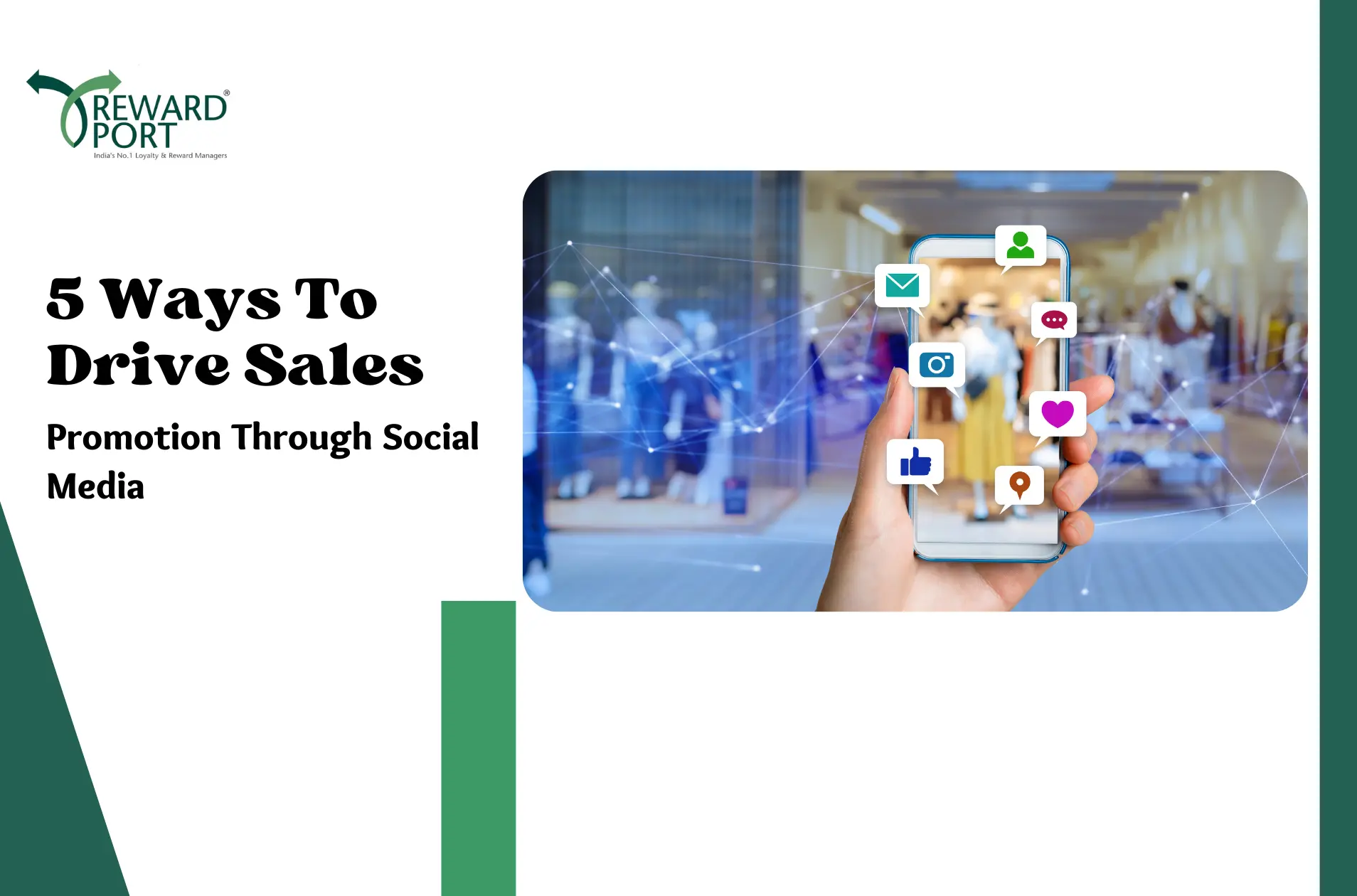
5 Ways To Drive Sales Promotion Through Social Media
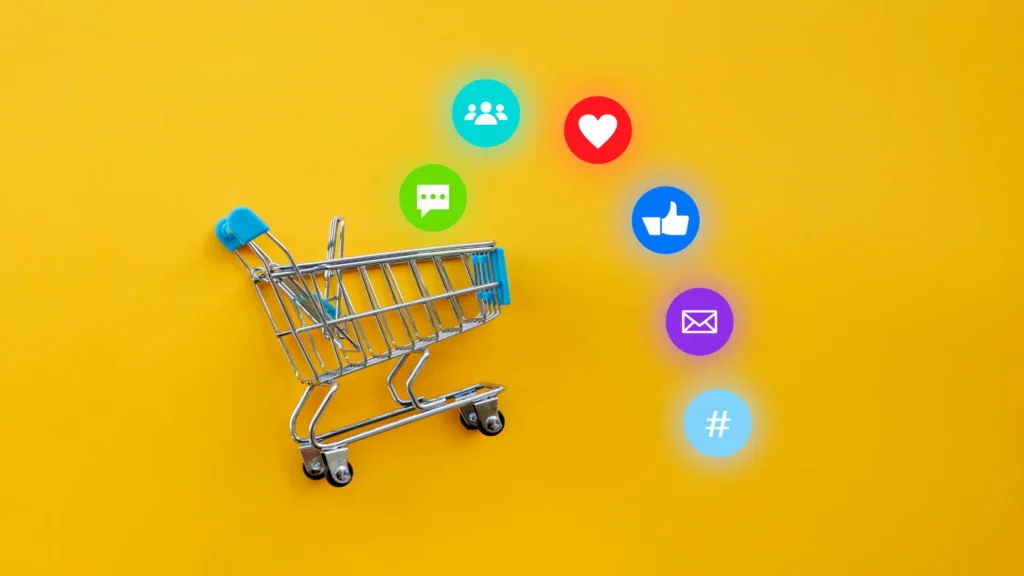
Sales promotion aims to increase the sales of the products or services to customers or clients. Routinely it targets at the low moving products or high consumption products/services. The process initiation utilizes distinct media and non-media methods.
Social media is very effective in reaching larger audience and there are 5 key methods by which social media can drive sales promotions for your business.
1. Understand the audience
As a rule of the thumb, understanding the buyer persona is imperative to gain insights into what the customers are searching for. Social media offers interactive platform where millions of users share their opinions. An informal approach sought after increasing the scope of trust building within the customers. The click through rate increases and hence greater conversions as users now wish to seek brands who have gained there trust and they now want to visit the business website again and again. Besides, being well informed about the customers’ buying behaviour prevents the businesses from getting tempted to bombard wrong advertisements at the wrong occasions.
Once you know the buyer behaviour, the next step is to approach the audience through targeted advertisements on product promotions.
2. Target the audience
Advertisements on social media suggest discounts and offers on the products or services. It conveys the offers to a substantial number of customers in a jiffy. However, not every customer bears similar interests. The social media is inundated with various advertisements every single day and directing the business advertisements to the right audience is essential. Targeting the right audience based on various parameters like demographic, region, ethnicity etc. keeps the sales promotion strategy on the right track.
3. Choose the right platform
Facebook, Instagram, Twitter and other social media platforms have varied features and each can be used to drive promotions. Linkedin is a professional development platform and mainly limited to professional communication. It is less likely to be effective for product discounts for customers, albeit it is constructive for B2B promotions .The Dynamic ad option particularly is a direct way of actively seeking engagements from individuals as well as businesses. Pinterest is well accepted among women groups. The sales promotion strategy should be aligned with the basic offerings of the platform and the sort of audience virtually active on it.
4. Perform Competitor analysis
As almost all businesses reach out to their customers through social media, it is easier to understand the competitors to ensure that the business does not lag behind the competition. This creates awareness of the opponent’s approach. While keeping this in mind, businesses can devise better creative methods. Additionally, one can track the seasonal and off-season trends for introducing the promotions on social media to prevent the clash of offers.
5. Schedule the promotions
Social media monitoring tools help to monitor and control the response to the promotion ads. This was never achievable with offline marketing methods. Advertisement posts have to be timed according to the peak usage hours to ensure maximum returns on the social media promotional efforts. The seasonal promotions have to be in congruence with the real trends which can be tapped online through social media.
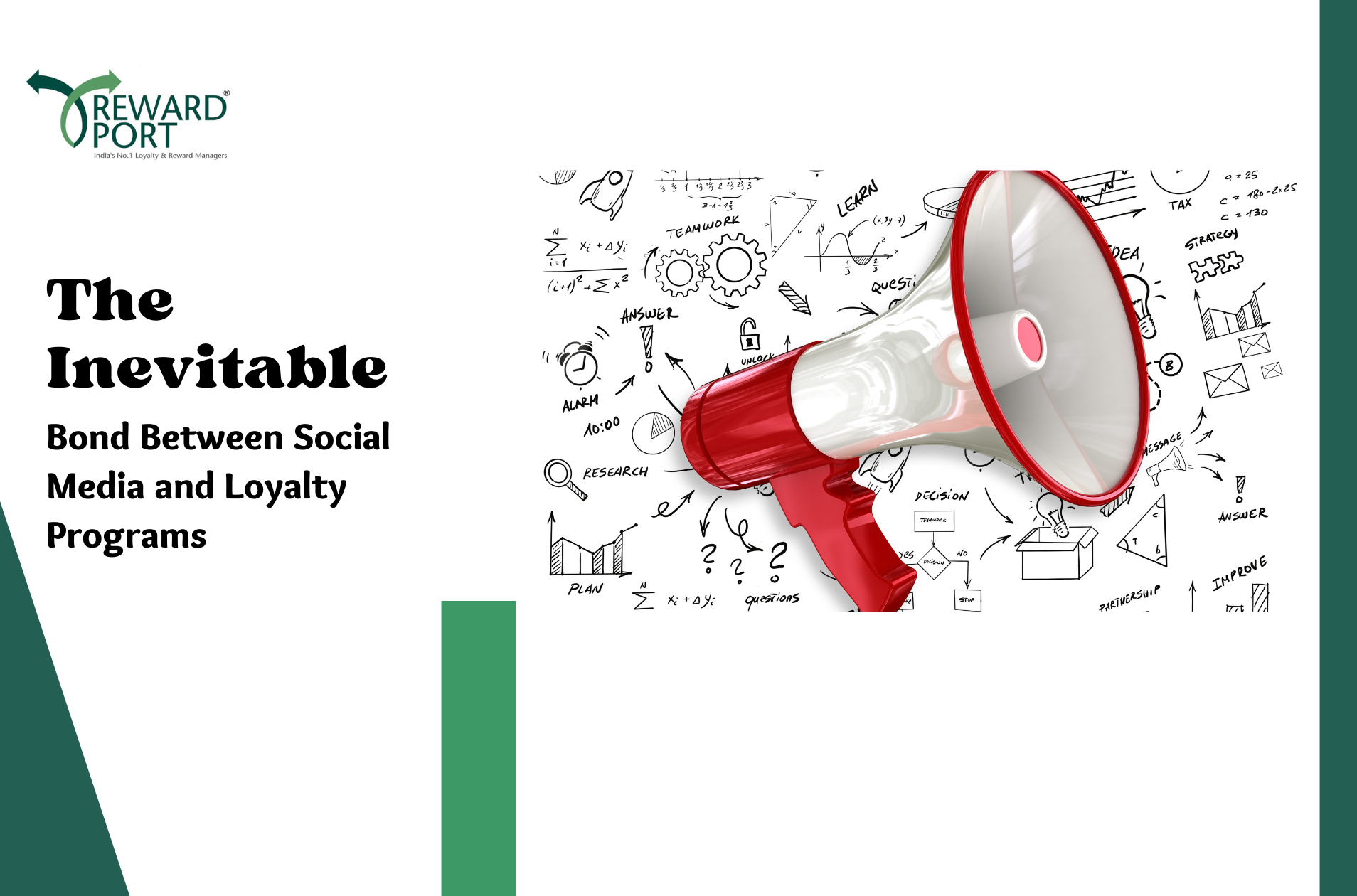
The Inevitable Bond Between Social Media and Loyalty Programs
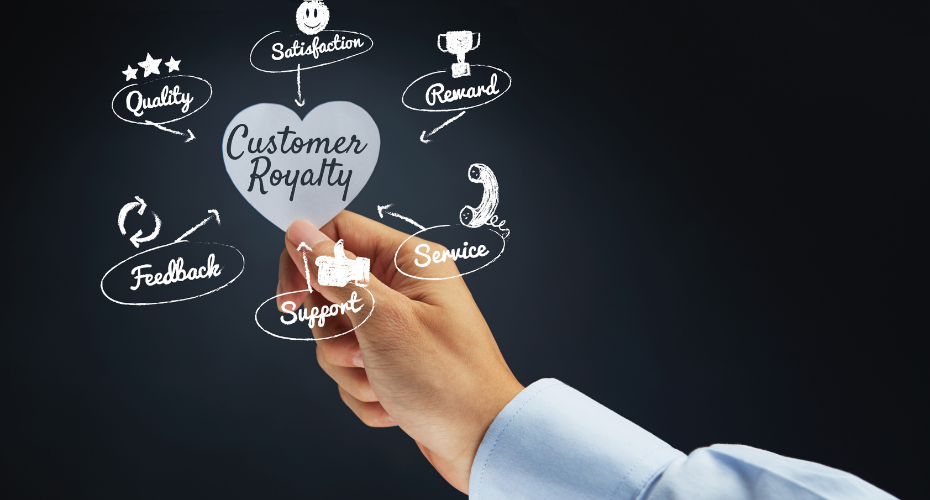
Social media has become one of the most important aspects of digital marketing today as it has been influencing all of our lives in one or the other way. If you are not using it to promote your brand, then you have been missing a lot of easy and affordable marketing opportunities. It is one of the most easiest and useful digital platforms to increase business visibility.
Loyalty programmes have started using this platform to leverage their customers since most of communications happen over mobile phones these days. The response and actions have become faster than earlier since it’s a direct approach to hit the right customer at the right time. People receive offers as pop-ups right on their phone screens that allows them to send a response quickly. According to a consumer survey done by Deloitte Consultancy, 61% per cent of participants checks their mobile phones first after 5 minutes of waking up every morning. This is isn’t surprising since more than 31% of the global population are connected to each other through social media. No matter where you are, thousands of people are right there for you to hear what you say on your social media pages.
As social media continues to permeate every aspect of the shopping experience, it’s quickly developing into a tool that is all about building relationships with your customers. Each time your customers check their social media profiles, they get the opportunity to communicate directly with your brand. Count it from direct messages, reviews to refer a friend, your customers can interact with your brand 24/7 through a variety of social media platforms.
This proves that social media plays a huge role in reviving your customer retention policies. So what better way to engage your target audience than by integrating your social media strategy with your rewards program? Customer loyalty solutions allows customers to connect to you easily and also rewards customers who buy from you frequently. It encourages customers to buy your products or use your service regularly. The encouragement comes in the form of discounts,free products, rebates or any other form of appreciation .
Brands use loyalty programs to strengthen their relationships with customers, increase in sales numbers and most importantly turning a prospective customer into a frequent buyer. A loyalty management program must ensure that the services meet the needs of the customers.
With so many users all over the world, social media is the ultimate resource to help you create curiosity about your rewards program on a global scale. You just need to determine on which platform your target is most likely o interact. Platforms like Facebook, Instagram, Twitter, Youtube, and Snapchat are adding new features to their platforms everyday and these changes bring countless number of ways to communicate and express the value of your loyalty program through an amalgamation of creative and visual content.
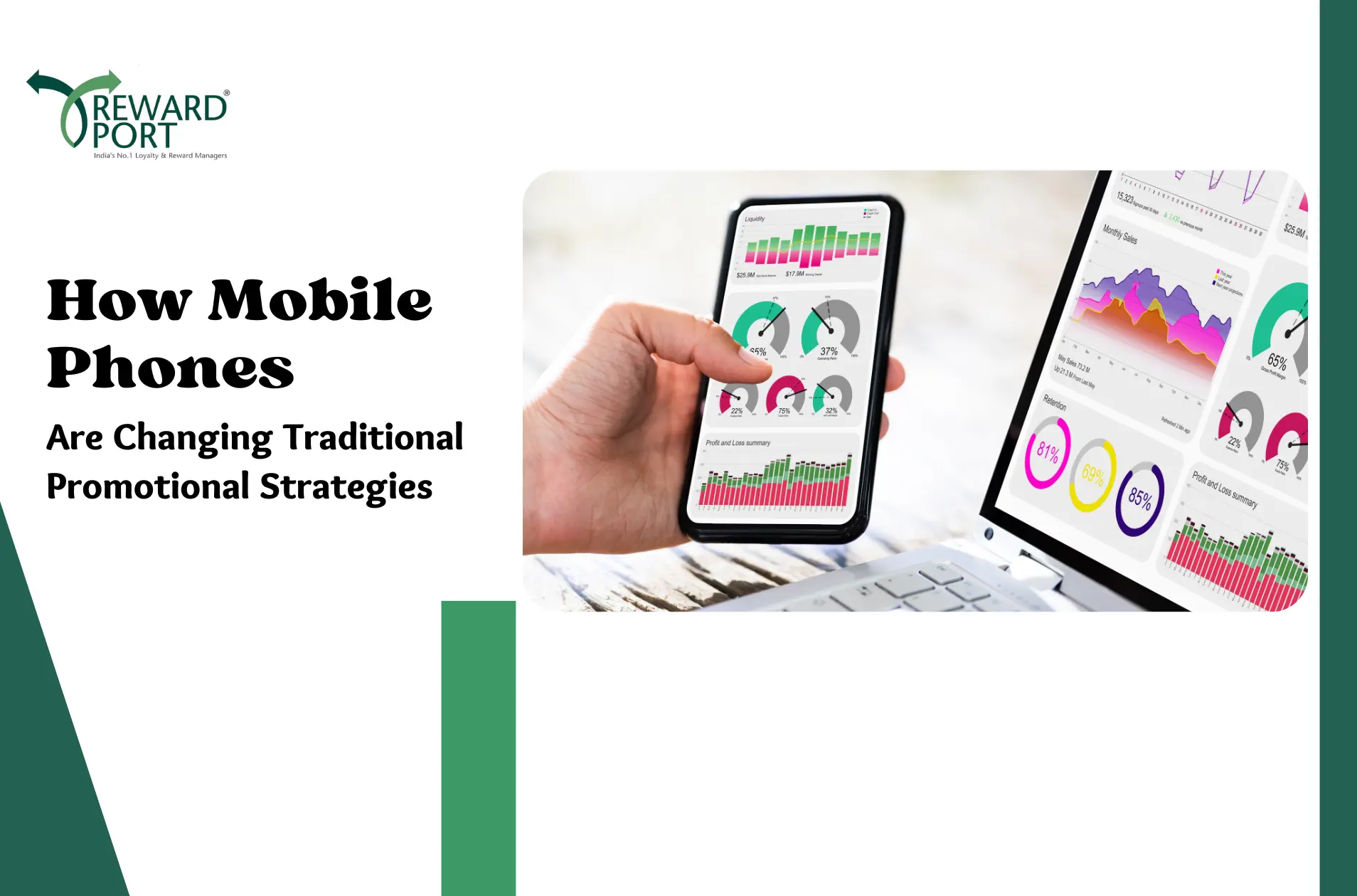
How Mobile Phones Are Changing Traditional Promotional Strategies

Surfing internet on a desktop or laptop is a thing of the past. Today, smartphones have taken the concept of surfing internet to a whole new level. And thanks to its immense progression, people are connected to each other anywhere and everywhere now.
Gone are the days of traditional promotional strategies on newspapers, magazines and traditional electronic media such as television and radio. Nowadays, people checks for Google recommendation before visiting a restaurant. Most of websites adapting mobile apps and Google inc. accepting only mobile-friendly websites. And with this progression, traditional promotional strategies slowly started getting obsolete. In this growing digital age, planning mobile-friendly marketing strategies is a must since it’s has become the most convenient and cost-friendly way to reach your target audience.
It’s Fast and effective:
Mobile marketing strategies are comparatively easy to execute since it’s less time consuming and easily accessible. easy to plan and so the campaigns become easy to execute. More and more devices have been becoming user-friendly and with the advent usage of internet, companies are able to connect with their customers directly with texts and calls. Through mobile promotional strategies, a business gets engaged with the right consumers who want to interact with their brand. The right set of customers receive messages, forwards it to their friends and creates an easy brand awareness.
A personalized approach
Brands establish personalized relationships with their customers through mobile marketing. Customers can choose and personalize what they receive on their phones and allow only those offers that matters to them. Most brands promote offers through their respective apps and customers access them whenever they check their phones since no one has time to go through their mails anymore.And this is the most easiest way out there to get direct engagement with their target audience.
Also,many customer provide their feedback on social media and other e-commerce platforms and this helps the companies to decide on their future course of action.
Impact of Social media
Companies should take social media as the first option to consider while carrying out any promotional activity. The impact of social media is so huge that every small or big business houses have started handling their social media profiles seriously. From branding to customer engagement, consumer feedback to interaction, social media has it all. Consumers can get all required information about their favourite brand by clicking on a single pop-up on their mobile screens.
In a nutshell, it’s impossible for a brand to expect a successful branding exercise without promoting it digitally. Planning your strategies according to the feedback data plays a vital role in carrying out a successful branding exercise.
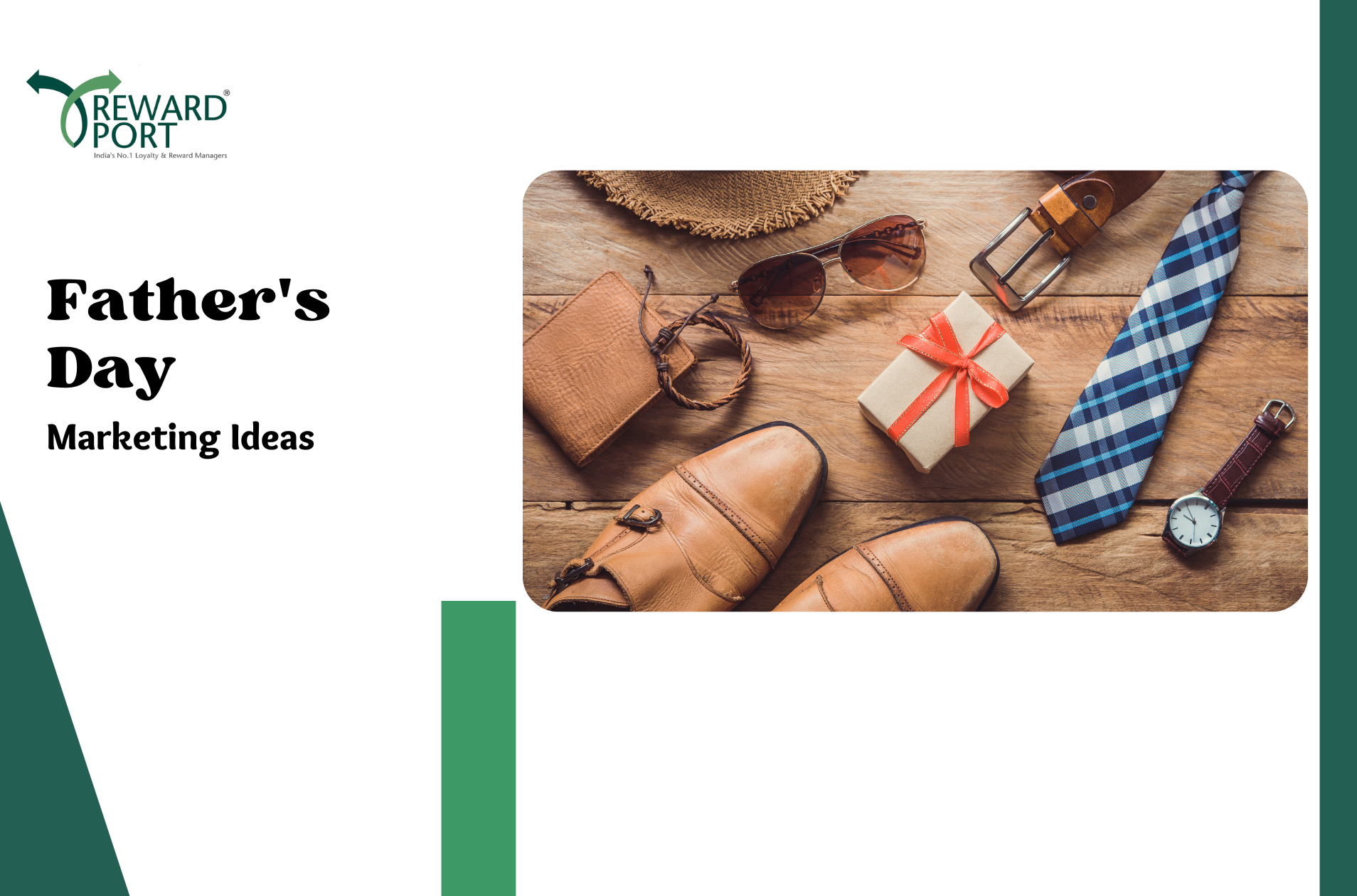
Father’s Day Marketing Ideas

Despite it being a slightly low-key celebratory day, it has gained enough popularity on the social media at least. And hence, capturing a huge section of audience becomes quite easy on different social media platforms. Here are a few ways, you could cater to your employees/audience and market the idea of Father’s day to them:
Promote on Email
Irrespective of your company being the type that celebrates such days or not, or if you don’t specifically cater to the type of audience that does, promoting in-house events related to the day or events that are in correspondence to the same can be promoted within your target audience. Building up on catchy headlines/subjects for such promotional emails are highly likely to attract greater audience.
Team Up
It can be a significantly healthy and fruitful idea to have your company approach local restaurants, eateries, bars and even fitness centers and partner with them and host vents or promote deals and offers that cater to the audience who are likely to be attracted by the same. Some offers such as ‘Bring your dad & the beer’s on us’ or ‘Like father-like son fitness challenge’, etc can prove to quiet a hit amongst younger generations.
Rule on Social Media
Having set up a contest specifically promoting the bond between fathers & children can be a great idea too. Running a contest that encourages people to post selfies of themselves with their father or having to write the funniest incident they shared with their children/father can also turn out to be a successful strategy to grab attention. Having the winners announced & distributing a promotional voucher or even a freebie of your own brand can do the company a whole world of good.
Spoilt for choice
Making your audience/customers part-take in events organised by you that celebrates father’s day & having fun games and rules set up for the same could be quite interesting. Partnering with fashion brands or clothing lines can also be an off-beat option but still quite impressive, though mothers are more likely to be interested in the shopping part, but that’s where it gets better. Your sale/event can have all the members of the family invited and participate in a game that requires them to select pieces of clothing each & the father gets to pick his favorite which can be given to him as a prize or at a discounted rate, etc.
These are some of the fun, interesting and practical ways to market Father’s Day to people in a more economical, interactive and impressive way for a wide range of audience.
Give your brand the edge it needs with RewardPort. Get end to end solutions for all your sales promotion needs! Team up with the best in the business to to make your most loyal customers feel rewarded with innovative loyalty programs that truly make a mark.

